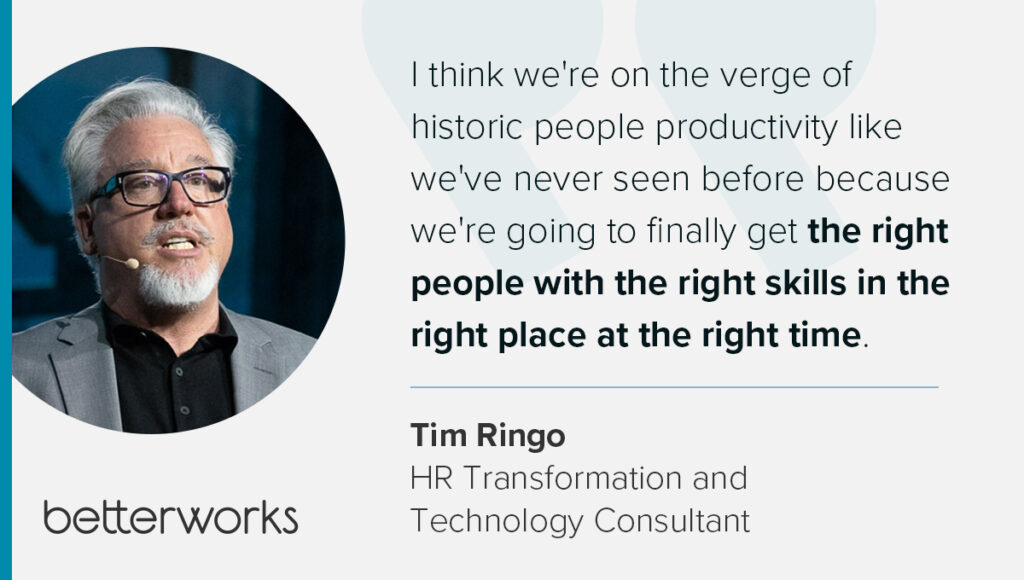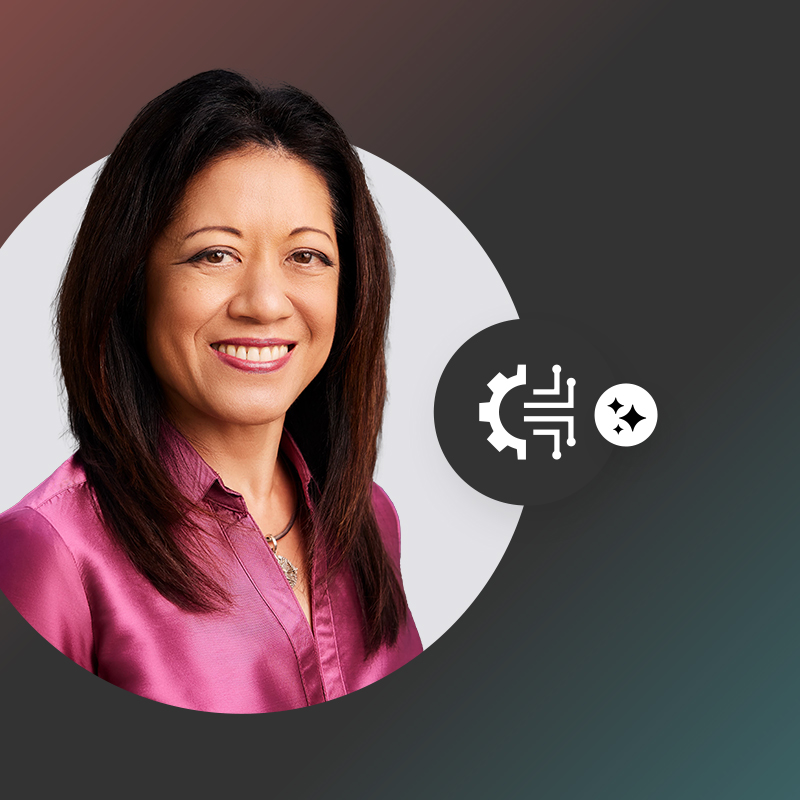As digital tools reshape work at unprecedented rates, successfully guiding your organization through constant change has never been more crucial — or more complex.
That’s why we invited Tim Ringo to share his advice for demystifying digital transformation at EmpowerHR Europe. Tim, previously a high-ranking executive at Accenture, IBM, and SAP, has designed and directed some of the world’s most prominent and successful HRIT and change initiatives. Across that experience, he’s discovered the key ingredient to a successful HR digital transformation: putting people first.

Tim wholeheartedly believes that you can demystify change by prioritizing employee motivation and putting the right talent in positions to succeed. “I think we’re on the verge of historic people productivity like we’ve never seen before because we’re going to finally get the right people with the right skills in the right place at the right time,” he said.
To help you apply this concept, Tim’s developed a straightforward framework for change centered around people, which he presented during his EmpowerHR Europe keynote session.
Discover what inspires your workforce
Prioritizing what inspires each person, Tim said, is key to empowering your talent and guiding organizational change in today’s digital workplace.
Both individuals and companies are responsible for this process. Employees, he said, need to put in the work to understand what they want from their career, and what fuels their purpose at work. “And then the other side of the coin is that organizations need to recognize that passion and try to put you in positions where they’re capturing and allowing you to drive that passion,” he said.
Solutions like Betterworks, Tim said, are instrumental in capturing employees’ interests. “That’s how we get to uncover and document and create a process around peoples’ motivations.”
Understanding what inspires and drives employees simplifies transformation by focusing change management squarely on people. It allows you to continuously support your workforce and harness their diverse skills and viewpoints to fuel innovation.
By truly recognizing each employee’s unique motivations, you can better align talent and maximize engagement throughout disruption. This helps you use new technologies to augment performance instead of hindering it.
Harness passions that fuel innovation
Allowing people to pursue meaningful work that aligns with their intrinsic motivations unleashes the creativity and new ideas you need to transform your business today. Prioritizing passion is essential to guiding organizational change and maximizing engagement during transformation, Tim said.
By prioritizing continuous learning opportunities, you empower your workforce to perform at their best and problem-solve creatively as work models evolve rapidly. This unlocks potential that transforms your business in today’s digital world.
One of the best ways to harness employee passions to drive change at work is through continuous learning opportunities — especially when the skills you need seem to change every day. “People love doing that: They love to learn,” Tim said. “And that is highly motivating, when the organization gives you plenty of opportunities to master those skills.”
By prioritizing continuous learning opportunities, you empower your workforce to perform at their best and problem-solve creatively as work models evolve rapidly. This unlocks potential that transforms your business in today’s digital world.
Empower talent with a people-first framework
To capture employee motivation and passion during digital transformation, Tim developed his People Engagement, Innovation, and Performance framework, or PEIP. “This is a mindset that starts with the CEO and the top executive team that gets converted into a business operating model and a set of processes,” Tim explained. “This is how we do business: We are going to try to get you in the right place at the right time with the right motivation.”
Processes derived from the PEIP framework affect every one of HR’s strategic responsibilities, including attracting, retaining, motivating, developing, connecting, and deploying talent. While the framework itself is not technology-driven, Tim suggests using technology to make process changes more sustainable.
“These are the kind of integrated processes that you then want to underpin with smart HR technologies, and this will help you match people’s desire to the work and make it part of the DNA of the organization,” he said. “It can’t be taken away: This is how we do work. And this is what creates much greater people performance and productivity.”
Want to learn more? Catch EmpowerHR Europe on demand to get more insights on driving business value and helping people thrive through change.
Get more empowered HR


